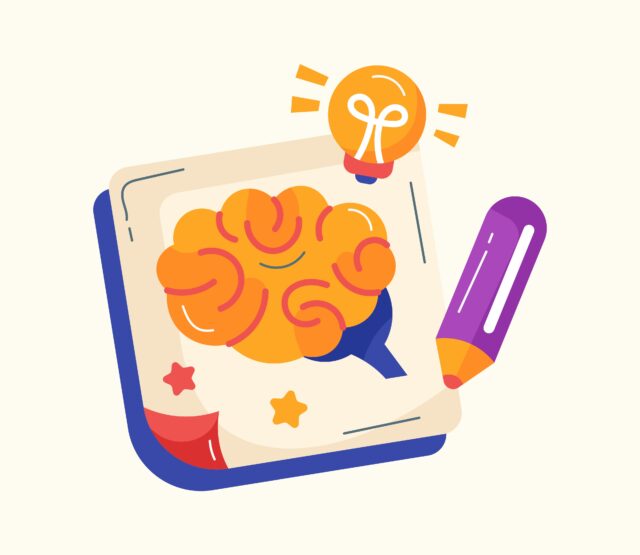 Cybersecurity is a discipline that’s hard to predict. It’s an ever-changing environment. Cyber threats evolve, the tools to defend against attacks mature, and people must continue to hone and adapt their skills. While no crystal ball can pinpoint the future of cybersecurity, we know there are three key components: people, processes, and technology.
Cybersecurity is a discipline that’s hard to predict. It’s an ever-changing environment. Cyber threats evolve, the tools to defend against attacks mature, and people must continue to hone and adapt their skills. While no crystal ball can pinpoint the future of cybersecurity, we know there are three key components: people, processes, and technology.
These three elements will shape the industry’s future, but the wild card is people. Cyber professionals have a greater weight than processes and technology. Innovation in technology to combat cybercrime has great momentum, aided by AI. You can do a lot to improve your security posture, but without people who have both soft and technical skills, your organization will be at a greater risk.
Let’s ponder the future of cybersecurity, touching on what the threat landscape will look like and how technology, processes, and people can address them.
The Future Threat Landscape
When looking at the future threat landscape, we can’t move too far ahead. Cybersecurity is too volatile to map out what things will look like in a decade. So, we’ll concentrate on the immediate future. Expect these threats to make an impact.
The Cybercrime Economy Is Booming
Cybercrime is the world’s third-largest economy and will cost the world $8 trillion in 2023 and $10.5 trillion by 2025. This economy is booming right now. Anyone can buy access to networks and ransomware online. Cybercriminals don’t need the technical skills to deploy a sophisticated attack. With this opportunity, there’s a new option for threat actors—cybercrime-as-a-service.
The cybercrime economy is also flourishing due to the Russia-Ukraine conflict, where cyber-attacks have created their own war zone. Any time there’s instability in a region, the proliferation of cybercrime should be expected. In fact, 93% of cyber leaders believe geopolitical instability is moderately or very likely to lead to a major cyber event.
The Remote Worker Continues to Be a Risk
The world of work is different now and unlikely to transition back to what it was before the pandemic. Employers must be flexible to attract and keep talent, which means remote work is here to stay. It extends the endpoints for any organization with hackers eager to find ways to exploit vulnerable or misconfigured systems.
You can no longer assume that all devices across the enterprise have perimeter security. Experts point to the adoption of zero-trust models to mitigate this risk.
Highly Targeted Cyber Attacks Will Become a Bigger Problem
The industry has transformed rapidly over the past few years, and hackers have been able to focus on weaknesses via highly targeted attacks. Since attackers can now outsource the actual hacking, they have more time to be strategic and research organizations to hit.
Their main target is finding those businesses most likely to pay a ransom to regain their data. These criminals look at organizations within regulated industries like healthcare. They know that those in healthcare face steep fines and reputational harm from data breaches and believe they’ll remit the ransom.
Technology Advancements to Defend Against Cyberattacks
As the threats above continue to surge, what new technology will be available to combat them? Much of it will involve AI (artificial intelligence) and ML (machine learning). However, it’s a bit of a double-edged sword.
AI and ML Technology: A Boost for Cyber Professionals and Hackers
The industry has optimism and worries regarding AI and ML. It’s become a great innovation to detect issues across a network with automation. It can take over many repetitive, rules-based tasks, freeing cyber professionals to be more strategic. There are several positive impacts associated with AI and ML, including:
- Detection of fraud and anomalies: AI and ML are excellent tools for detecting and recognizing patterns. They take the pressure off humans having to monitor every system.
- Email spam filtering: Phishing remains a key tactic for hackers. Cybercriminals are becoming much more sophisticated with these attacks. Even employees with high knowledge of phishing, genuine-looking emails can still trick them. Using AI to filter email spam can prevent them from getting to anyone’s inbox.
- Identifying botnets: ML algorithms can find and prevent bot attacks. They also can detect behavior patterns, which would be very labor-intensive and timely for humans to do alone.
- Data leak prevention: No organization wants to expose its data, and AI can classify specific data types in text and non-text formats. The algorithms can learn to distinguish sensitive information by searching for data in videos, images, and voice recordings.
AI and ML also have benefits for cybercriminals who use them to:
- Gather data for victim profiling and social engineering.
- Deploy ransomware with success.
- Create sophisticated phishing scams.
- Generate deepfakes with voice phishing.
- Hide malware by mimicking legitimate network traffic.
- Break passwords and CAPTCHAs.
Next, we’ll look at how specific processes can adapt to cybersecurity’s future.
Processes and Workflows Must Evolve
The next piece of the cybersecurity future puzzle is the process. Process in this manner means any tactic or workflow that’s part of cybersecurity operations. Technology is redefining these, with AI and ML able to automate many labor-intensive things. There’s more to reinvent, as well, including:
- Risk assessments: Your threat landscape is growing and changing rapidly, so you need more flexible workflows to reassess risk consistently.
- Penetration testing: Any organization needs to leverage penetration testing by qualified third parties. White hat hackers use tools to automate some of this, but humans still need to be part of this, so it’s not advisable to just let the bots do it.
- Organizational design review: Your organization’s structure affects risk management. The most important is to have cyber professionals within the C-suite. Security experts need to have the ear of leadership to convey the risk landscape and receive the right support.
- Supply chain security refresh: Supply chain risk continues to be a security risk, but you can’t operate in a vacuum. Instead, you must prioritize third-party risk management, conduct ongoing assessments, and secure privileged access management.
- Implementing DevSecOps: By adopting this principle, you can progress the strategy of being secure by design. DevSecOps enables security and agility.
As an umbrella over all these recommendations, your overarching cybersecurity strategy needs a regular update to consider what the present and future hold.
Now, let’s move to the third and most important pillar—people.
The Future of Cybersecurity: It’s Still People-Centered
Innovation in cybersecurity depends on technology and processes. However, your people play a significant role in creating a culture of innovation. That innovation may be elusive to you for several reasons, the most glaring being the cybersecurity talent shortage. It’s hard to innovate when you have to do more with less. Additionally, your people may be unwilling or unable to progress in their perspectives or mindsets.
To future-proof your cyber staff, you’ll need to help them become great communicators, collaborators, and critical thinkers. There’s a framework to do this called the Secure Methodology™, which has seven steps to support the new era of cybersecurity.
The Secure Methodology Transforms Technical People to Drive Innovation
Here’s a quick preview of each step and how it contributes to preparing your cyber workforce for the future.
- Awareness: Technical folks often struggle with being aware of themselves and others, which causes conflict and barriers to progress. Awakening awareness helps people widen their perspectives and be better collaborators.
- Mindset: Shifting people from a fixed to a growth mindset makes them able to consider the future and how to address emerging threats. Developing a mindset has a lot to do with understanding motivation and breaking down walls.
- Acknowledgment: As a cyber leader, you have a lot of control over this. Starting with an appreciation for staff goes a long way in building trust and respect. Positive reinforcement can affect how workers see themselves in the enterprise. They’ll feel like they are part of something and will be more adaptable to what’s coming. Accountability is important here, too, but keep the correction to private conversations.
- Communication: If technical people have poor communication skills, innovation, and future-proofing will remain out of reach. They must learn to speak inclusively (no geek speak!) and listen effectively. How you communicate with your team and others set the standard. Discussing the importance of honest and transparent communication should be something you reinforce daily.
- Monotasking: In monotasking, people concentrate on a specific task. It’s the opposite of multitasking, which increases the likelihood of mistakes and errors. It fits into the future conversation because technology and automation can remove a lot of the manual strain so that cyber professionals can focus on higher-level work without distractions.
- Empathy: Cognitive empathy describes the ability to understand someone else’s feelings and perspectives. It’s an attribute that supports awareness, mindset, and communication. Creating a culture of empathy in your cybersecurity team means they can grow and evolve as dynamics change.
- Kaizen: This is a Japanese term that means “continuous improvement,” and any organization needs this as a pillar to be ready for cybersecurity’s future.
The Secure Methodology steps drive change so your people can weather the future. They are your most valuable assets and the centerpiece for innovation.












